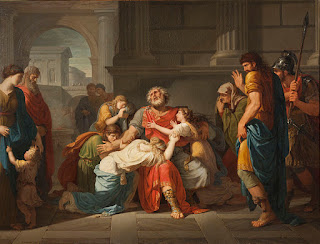The Bluest Eye
Novel
The Bluest Eye
Toni Morrison, author, professor, editor,
and speaker, has penned novels, works of nonfiction, children’s books,
and other works. In 1988, she won the Pulitzer Prize in fiction for her
novel Beloved. Morrison’s work
has been instrumental in opening doors for a mainstream readership of
African American literature. Her works are known for their exposure of
racial issues through strong characterization, difficult themes, and
varied points of view. The Bluest Eye, her first novel, is based on the memory of a childhood acquaintance’s desire for blue eyes.
One of Morrison’s common themes is
community versus the individual. This theme confronts race issues
through the consideration of the individual as other and the examination
of a community’s unwillingness to provide for or support the oppressed.
Early in The Bluest Eye,
Claudia MacTeer relates how she and her sister Frieda learn about their
community. Their conversation is like a gently wicked dance: sound meets
sound, curtsies, shimmies, and retires. . . . We do not, cannot, know
the meanings of all their words, for we are nine and ten years old. So
we watch their faces, their hands, their feet, and listen for truth in
timbre.
In listening to this “dance,” the girls
learn how to behave, what to believe, and how to view the individuals in
the community. Pecola’s pregnancy, specifically, is related through
this communal gossip.
Another community issue is intraracial
tension. Maureen Peal, the wealthy light-skinned girl who temporarily
befriends Pecola, and Geraldine, the light-skinned Southern mother of
Junior, personify the issue of skin tone. Their denunciation of Pecola
reflects the rejection of African Americans through white oppression.
Family is the strongest example of
community in the novel. While the MacTeer family protects Frieda from
Mr. Henry’s advances, more important is the contrast between the MacTeer
parents and the Breedlove parents. Claudia’s father protects his child,
while Cholly Breedlove is his daughter’s predator.
Claudia’s chapters are always
first-person, but in some chapters, she tells the story as a child. The
chapters about Pecola also are often presented in first-person; however,
she is further victimized because she is never the narrator. Instead,
through the words of others, she is pitied (by Claudia), overlooked (by
her mother), raped (by her father, Cholly), used and manipulated (by
Soaphead), and objectified (by insanity).




Comments
Post a Comment